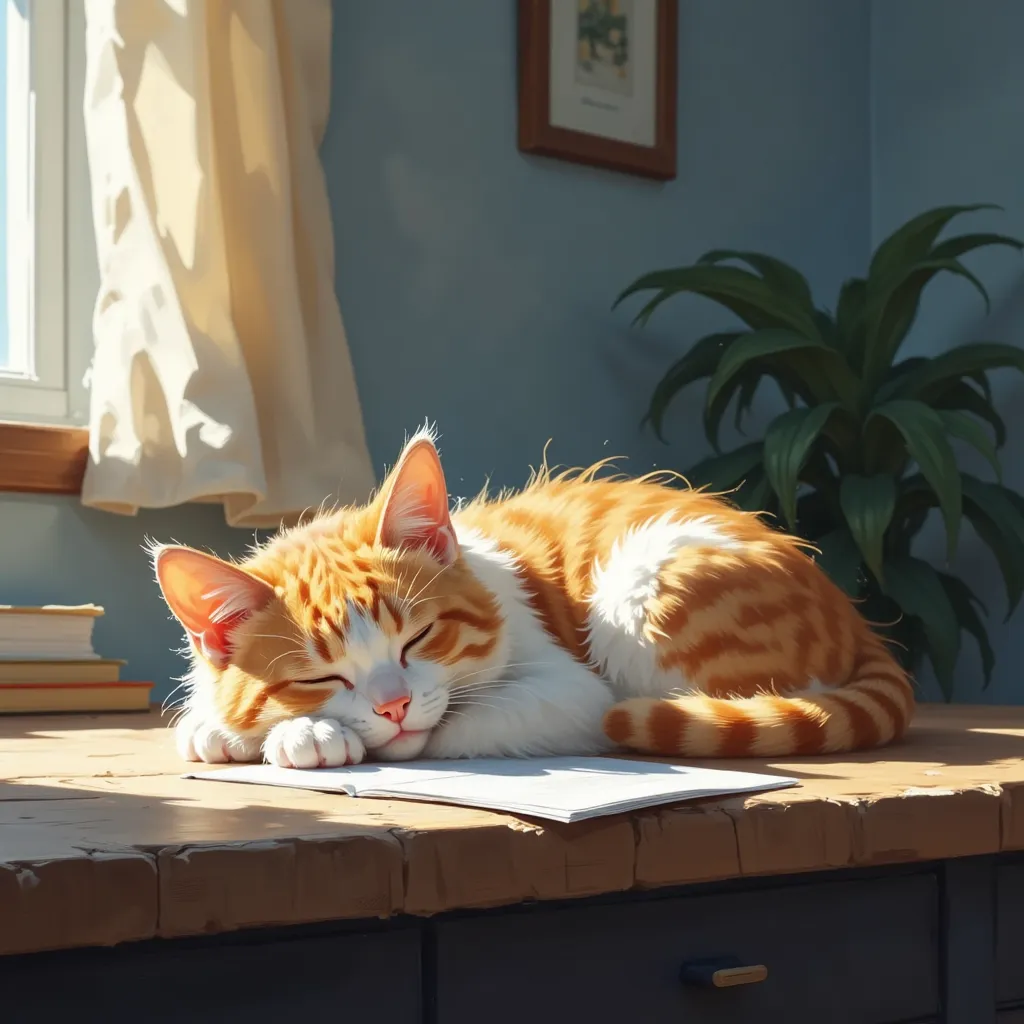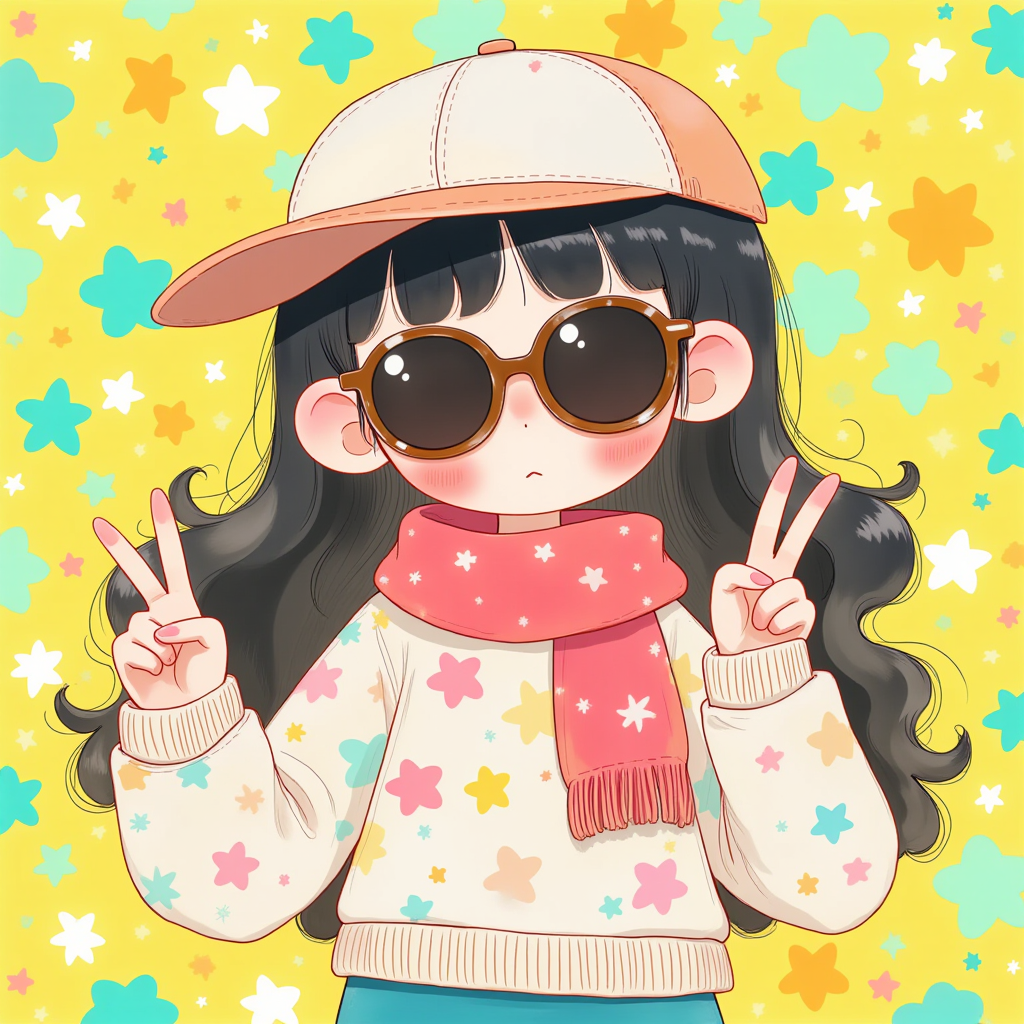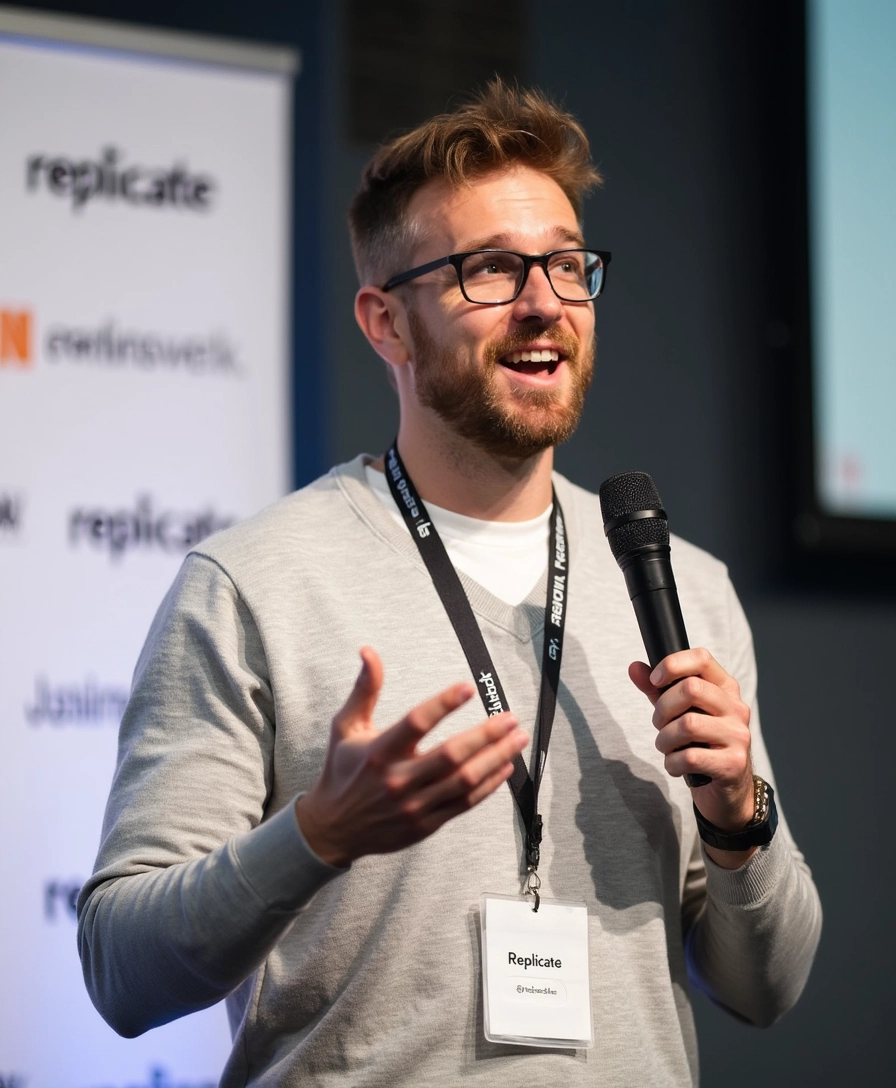flux-dreamscape
Maintainer: bingbangboom-lab

20

| Property | Value |
|---|---|
| Run this model | Run on Replicate |
| API spec | View on Replicate |
| Github link | No Github link provided |
| Paper link | View on Arxiv |
Create account to get full access
Model overview
flux-dreamscape is a Flux LoRA model developed by bingbangboom-lab that can generate unique and imaginative dream-like images. It is similar to other Flux LoRA models such as [object Object], [object Object], [object Object], and [object Object], which each have their own distinct styles and capabilities.
Model inputs and outputs
flux-dreamscape takes in a text prompt and optional image, mask, and other parameters to generate surreal, dreamlike images. The model can produce multiple outputs from a single input, and the images have a high level of detail and visual interest.
Inputs
- Prompt: The text prompt that describes the desired image
- Image: An optional input image for inpainting or image-to-image tasks
- Mask: An optional mask to specify which parts of the input image should be preserved or inpainted
- Seed: A random seed value for reproducible generation
- Model: The specific model to use, with options for faster generation or higher quality
- Width and Height: The desired dimensions of the output image
- Aspect Ratio: The aspect ratio of the output image, with options for custom sizes
- Num Outputs: The number of images to generate
- Guidance Scale: The strength of the text prompt in guiding the image generation
- Prompt Strength: The strength of the input image in the image-to-image or inpainting process
- Extra LoRA: Additional LoRA models to combine with the main model
- LoRA Scale: The strength of the LoRA model application
Outputs
- Image(s): The generated image(s) in the specified output format (e.g., WebP)
Capabilities
flux-dreamscape can generate surreal, dreamlike images with a high level of detail and visual interest. The model is capable of producing a wide variety of imaginative scenes, from fantastical landscapes to whimsical characters and objects. The dreamlike quality of the images sets this model apart from more realistic text-to-image models.
What can I use it for?
flux-dreamscape could be a useful tool for artists, designers, or anyone looking to create unique and inspiring visuals. The model's capabilities could be applied to a range of projects, such as concept art, album covers, book illustrations, or even video game assets. The model's ability to generate multiple outputs from a single input also makes it a valuable tool for experimentation and ideation.
Things to try
One interesting aspect of flux-dreamscape is its ability to combine the main model with additional LoRA models, allowing users to further customize the style and content of the generated images. Experimenting with different LoRA models and scales can lead to a wide range of unique and unexpected results, making this model a versatile tool for creative exploration.
This summary was produced with help from an AI and may contain inaccuracies - check out the links to read the original source documents!
Related Models

flux-new-whimscape

1
The flux-new-whimscape model is a Flux LoRA (Low-Rank Adaptation) model created by bingbangboom-lab for generating whimsical illustrations. It is similar to other Flux LoRA models like flux-dreamscape, flux-ghibsky-illustration, flux-childbook-illustration, and flux-mystic-animals, all of which aim to create unique and imaginative illustrations using the Flux model. Model inputs and outputs The flux-new-whimscape model takes a variety of inputs, including a prompt, image, seed, and hyperparameters to control the generation process. The output is an image or set of images in the specified format (e.g. WEBP). Inputs Prompt**: The text prompt that describes the desired image Image**: An input image for img2img or inpainting mode Seed**: A random seed for reproducible generation Model**: The specific model to use for inference (e.g. "dev" or "schnell") Width and Height**: The desired dimensions of the generated image in text-to-image mode Aspect Ratio**: The aspect ratio for the generated image in text-to-image mode Num Outputs**: The number of images to generate Guidance Scale**: The guidance scale for the diffusion process Prompt Strength**: The prompt strength when using img2img or inpainting Num Inference Steps**: The number of inference steps to perform Outputs Images**: The generated image(s) in the specified output format Capabilities The flux-new-whimscape model is capable of generating whimsical, imaginative illustrations based on the provided prompt. The model can create a variety of styles, from surreal and dreamlike to more grounded and realistic, by combining different Flux LoRA models. For example, using the prompt "illustration in the style of WHMSCPE001" can produce enchanting, whimsical landscapes with fantastical elements. What can I use it for? The flux-new-whimscape model could be useful for a variety of applications, such as: Generating illustrations for children's books, greeting cards, or other creative projects Conceptualizing new product designs or marketing materials with a whimsical flair Experimenting with different art styles and collaborating with artists to explore new creative directions Inspiring personal creativity and self-expression through imaginative image generation Things to try Try experimenting with different prompts and model configurations to see the range of whimsical illustrations the flux-new-whimscape model can produce. You can also combine it with other Flux LoRA models like flux-dreamscape or flux-ghibsky-illustration to create unique, blended styles. Additionally, you can try using the model for inpainting or img2img tasks to see how it can transform existing images into whimsical illustrations.
Updated Invalid Date

sdxl-lightning-4step

412.2K
sdxl-lightning-4step is a fast text-to-image model developed by ByteDance that can generate high-quality images in just 4 steps. It is similar to other fast diffusion models like AnimateDiff-Lightning and Instant-ID MultiControlNet, which also aim to speed up the image generation process. Unlike the original Stable Diffusion model, these fast models sacrifice some flexibility and control to achieve faster generation times. Model inputs and outputs The sdxl-lightning-4step model takes in a text prompt and various parameters to control the output image, such as the width, height, number of images, and guidance scale. The model can output up to 4 images at a time, with a recommended image size of 1024x1024 or 1280x1280 pixels. Inputs Prompt**: The text prompt describing the desired image Negative prompt**: A prompt that describes what the model should not generate Width**: The width of the output image Height**: The height of the output image Num outputs**: The number of images to generate (up to 4) Scheduler**: The algorithm used to sample the latent space Guidance scale**: The scale for classifier-free guidance, which controls the trade-off between fidelity to the prompt and sample diversity Num inference steps**: The number of denoising steps, with 4 recommended for best results Seed**: A random seed to control the output image Outputs Image(s)**: One or more images generated based on the input prompt and parameters Capabilities The sdxl-lightning-4step model is capable of generating a wide variety of images based on text prompts, from realistic scenes to imaginative and creative compositions. The model's 4-step generation process allows it to produce high-quality results quickly, making it suitable for applications that require fast image generation. What can I use it for? The sdxl-lightning-4step model could be useful for applications that need to generate images in real-time, such as video game asset generation, interactive storytelling, or augmented reality experiences. Businesses could also use the model to quickly generate product visualization, marketing imagery, or custom artwork based on client prompts. Creatives may find the model helpful for ideation, concept development, or rapid prototyping. Things to try One interesting thing to try with the sdxl-lightning-4step model is to experiment with the guidance scale parameter. By adjusting the guidance scale, you can control the balance between fidelity to the prompt and diversity of the output. Lower guidance scales may result in more unexpected and imaginative images, while higher scales will produce outputs that are closer to the specified prompt.
Updated Invalid Date

flux-koda

1
flux-koda is a Lora-based model created by Replicate user aramintak. It is part of the "Flux" series of models, which includes similar models like flux-cinestill, flux-dev-multi-lora, and flux-softserve-anime. These models are designed to produce images with a distinctive visual style by applying Lora techniques. Model inputs and outputs The flux-koda model accepts a variety of inputs, including the prompt, seed, aspect ratio, and guidance scale. The output is an array of image URLs, with the number of outputs determined by the "Num Outputs" parameter. Inputs Prompt**: The text prompt that describes the desired image. Seed**: The random seed value used for reproducible image generation. Width/Height**: The size of the generated image, in pixels. Aspect Ratio**: The aspect ratio of the generated image, which can be set to a predefined value or to "custom" for arbitrary dimensions. Num Outputs**: The number of images to generate, up to a maximum of 4. Guidance Scale**: A parameter that controls the influence of the prompt on the generated image. Num Inference Steps**: The number of steps used in the diffusion process to generate the image. Extra Lora**: An additional Lora model to be combined with the primary model. Lora Scale**: The strength of the primary Lora model. Extra Lora Scale**: The strength of the additional Lora model. Outputs Image URLs**: An array of URLs pointing to the generated images. Capabilities The flux-koda model is capable of generating images with a unique visual style by combining the core Stable Diffusion model with Lora techniques. The resulting images often have a painterly, cinematic quality that is distinct from the output of more generic Stable Diffusion models. What can I use it for? The flux-koda model could be used for a variety of creative projects, such as generating concept art, illustrations, or background images for films, games, or other media. Its distinctive style could also be leveraged for branding, marketing, or advertising purposes. Additionally, the model's ability to generate multiple images at once could make it useful for rapid prototyping or experimentation. Things to try One interesting aspect of the flux-koda model is the ability to combine it with additional Lora models, as demonstrated by the flux-dev-multi-lora and flux-softserve-anime models. By experimenting with different Lora combinations, users may be able to create even more unique and compelling visual styles.
Updated Invalid Date

flux-dev-realism

231
The flux-dev-realism model is a variant of the FLUX.1-dev model, a powerful 12 billion parameter rectified flow transformer capable of generating high-quality images from text descriptions. This model has been further enhanced by XLabs-AI with their realism LORA, a technique for fine-tuning the model to produce more photorealistic outputs. Compared to the original FLUX.1-dev model, the flux-dev-realism model can generate images with a greater sense of realism and detail. Model inputs and outputs The flux-dev-realism model accepts a variety of inputs to control the generation process, including a text prompt, a seed value for reproducibility, the number of outputs to generate, the aspect ratio, the strength of the realism LORA, and the output format and quality. The model then generates one or more high-quality images that match the provided prompt. Inputs Prompt**: A text description of the desired output image Seed**: A value to set the random seed for reproducible results Num Outputs**: The number of images to generate (up to 4) Aspect Ratio**: The desired aspect ratio for the output images Lora Strength**: The strength of the realism LORA (0 to 2, with 0 disabling it) Output Format**: The format of the output images (e.g., WEBP) Output Quality**: The quality of the output images (0 to 100, with 100 being the highest) Outputs Image(s)**: One or more high-quality images matching the provided prompt Capabilities The flux-dev-realism model can generate a wide variety of photorealistic images, from portraits to landscapes to fantastical scenes. The realism LORA applied to the model helps to produce outputs with a greater sense of depth, texture, and overall visual fidelity compared to the original FLUX.1-dev model. The model can handle a broad range of prompts and styles, making it a versatile tool for creative applications. What can I use it for? The flux-dev-realism model is well-suited for a variety of creative and commercial applications, such as: Generating concept art or illustrations for games, films, or other media Producing stock photography or product images for commercial use Exploring ideas and inspirations for creative projects Visualizing scenarios or ideas for storytelling or world-building By leveraging the realism LORA, the flux-dev-realism model can help to bring your creative visions to life with a heightened sense of visual quality and authenticity. Things to try One interesting aspect of the flux-dev-realism model is its ability to seamlessly blend different artistic styles and genres within a single output. For example, you could try prompting the model to generate a "handsome girl in a suit covered with bold tattoos and holding a pistol, in the style of Animatrix and fantasy art with a cinematic, natural photo look." The results could be a striking, visually compelling image that combines elements of realism, animation, and speculative fiction. Another approach to explore would be to experiment with the LORA strength parameter, adjusting it to find the right balance between realism and stylization for your specific needs. By fine-tuning this setting, you can achieve a range of visual outcomes, from highly photorealistic to more fantastical or stylized.
Updated Invalid Date